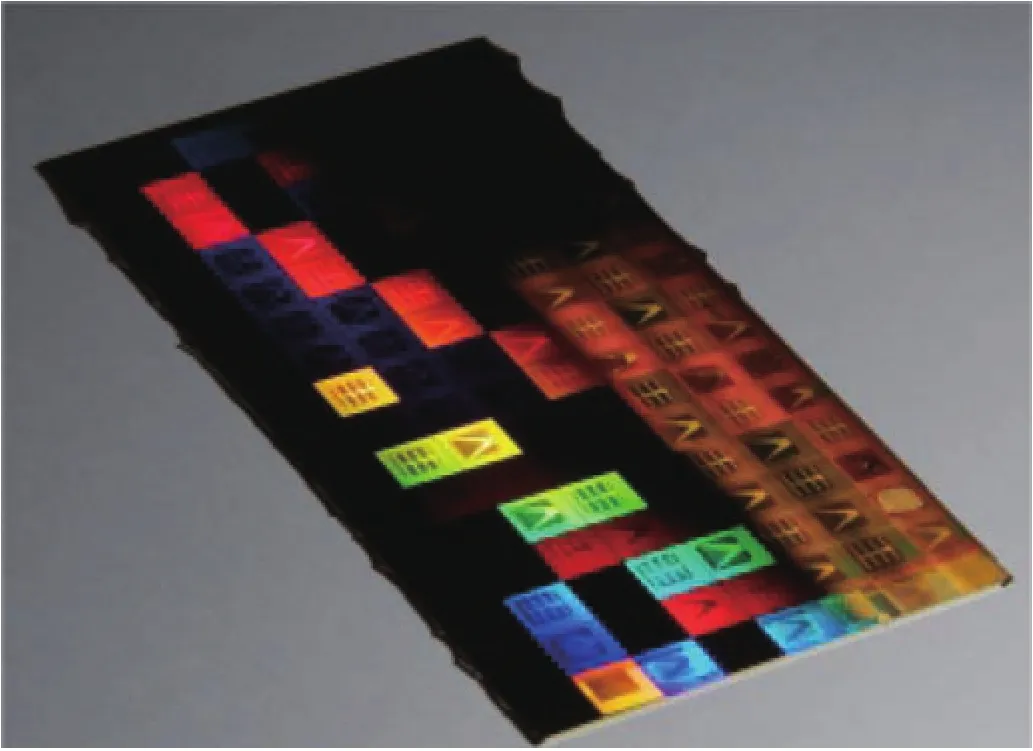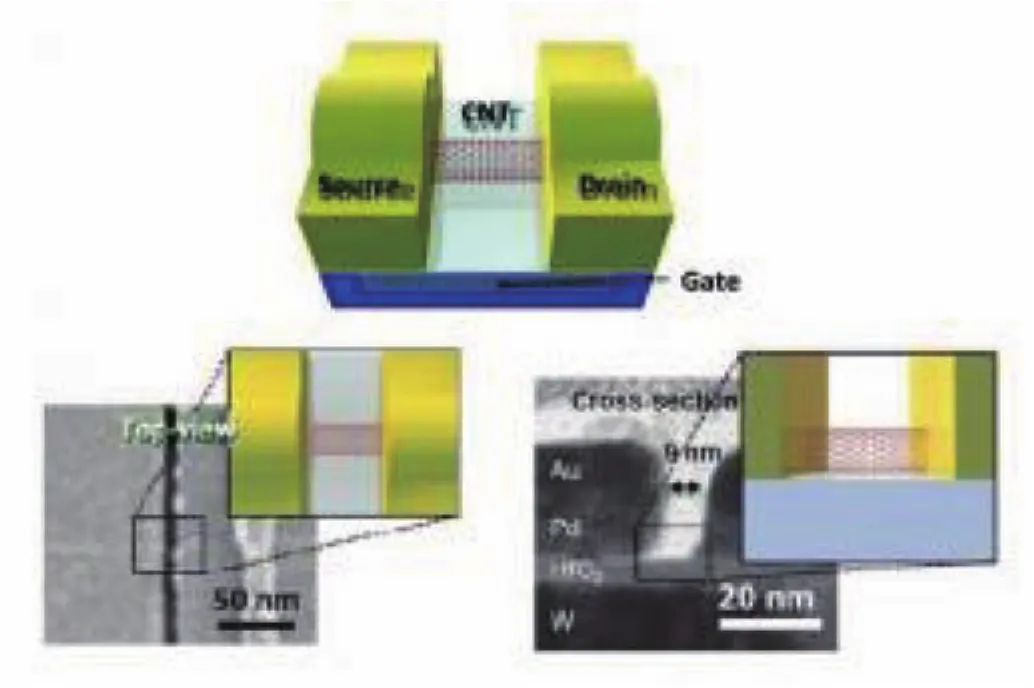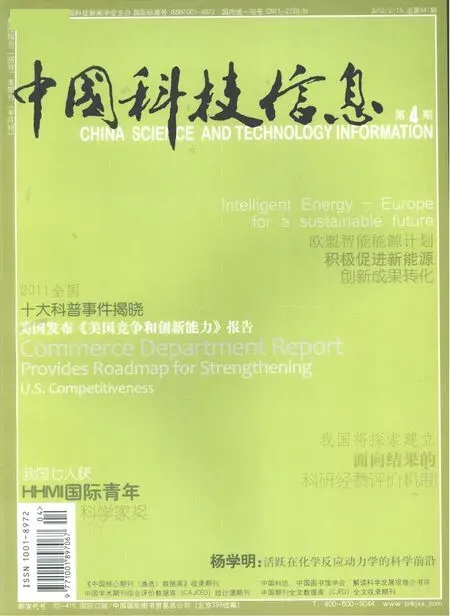国际科技信息
2012-11-13
国际科技信息
欧盟智能能源计划积极促进新能源创新成果转化

欧盟智能能源计划由欧委会于2003年正式启动实施,欧委会能源总司具体运作管理。欧委会公共财政平均每年投资1亿欧元的IEE计划(2007-2013年财政预算7.3亿欧元)与成员国财政资金联合共同资助新能源科技成果的转化及商业化项目。所选项目主要来自欧盟研发框架计划或成员国政府科研计划有关新能源的研发创新成果。IEE计划旨在提高能效,发展可再生能源,减缓气候变化影响,保持欧盟未来竞争力。其三大优先目标分别是:1、促进提高能源效率和鼓励能源合理利用;2、提高新能源和可再生能源的利用率和鼓励能源多元化;3、推动交通领域的能效提升和可再生能源利用。
IEE计划资助的优先领域:可再生能源,提高能效,节能建筑,新能源产业化,交通节能减排。IEE计划资助选择项目的参照标准(符合愈多标准优先):吸引金融和社会风险投资,创新成果的先进性及商业潜力,产学研用紧密结合,创新型中小企业积极参与,节能减排新兴产业发展,能源可持续及多元化。
IEE计划资助的项目已经取得明显的经济社会效益。例如:推荐的系列新型节能建筑相比传统建筑至少节能50%;改善和规范了整个欧盟源自可再生能源的电力生产技术支撑平台的效率;支持欧洲加速发展更清洁、更节能城市等等。
Intelligent Energy – Europe: for a sustainable future
The EU has set itself ambitious targets to achieve clean and secure energy for tomorrow. An optimal use of available tools is necessary to meet these targets. A wide range of technologies and methods exist to improve energy efficiency, turn renewables into viable energy sources and reduce emissions. However, market conditions prevent them from reaching their full potential. This is where the Intelligent Energy –Europe programme comes in.
The Intelligent Energy –Europe (IEE) programme is giving a boost to clean and sustainable solutions. It supports their use and dissemination and the Europe-wide exchange of related knowledge and know-how.
Targeted funding is provided for creative projects putting this idea into practice.
The projects help to further the three main objectives:
· Promoting energy efficiency and encouraging the rational use of energy sources;
· Increasing the use of new and renewable energy sources as well as encouraging energy diversification;
· Stimulating energy efficiency and renewables in the field of transport.
Intelligent Energy – Europe (IEE) offers a helping hand to organisations willing to improve energy sustainability. Launched in 2003 by the European Commission, the programme is part of a broad push to create an energy-intelligent future for us all. It supports EU energy efficiency and renewable energy policies, with a view to reaching the EU 2020 targets (20% cut in greenhouse gas emissions, 20% improvement in energy efficiency and 20% of renewables in EU energy consumption).
Intelligent Energy – Europe creates better conditions for a more sustainable energy future in areas as varied as renewable energy, energy-efficient buildings, industry, consumer products and transport.
The expectation is that by doing this, Europe will also boost its competitiveness, security of energy supply, and innovation standing for the years to come.
Running until 2013, the programme is open to all EU Member States, plus Norway, Iceland, Liechtenstein, Croatia and the Former Yugoslav Republic of Macedonia. A budget of € 730 million is available to fund projects and put into place a range of European portals, facilities and initiatives.
A large part of the programme budget is made available through annual calls for proposals to support projects putting the concept of 'intelligent energy' in practice. Carried out by public, private or non-governmental European organisations, they support three main objectives - more energy efficiency, more renewables, and better transport and mobility. This covers for instance new training schemes, promotion campaigns, or the transfer of good practices between EU countries.
The IEE programme has been up and running since 2003. More than 500 European projects involving 3 500 European organisations have received funding and a lot has been achieved already. The programme and its projects are helping the EU deliver on its 2020 objectives to improve energy efficiency, increase the share of renewables in EU energy consumption and to reduce greenhouse gases.

美国发布《美国竞争和创新能力》报告
2012年伊始,美国商务部发布《美国竞争和创新能力》报告,对21世纪以来美国所面临的挑战进行了分析,并提出了对策建议。
该报告认为,美国经济竞争能力下滑,国民收入止步不前,就业增长缓慢,对科技要素的支持力度减弱。
该报告提出,创新是提高竞争能力、增加收入、促进就业、推动经济长远发展的关键因素,增强创新能力的三项关键措施是联邦政府要加大对基础研究、教育和基础设施的支持,特别是增加投入。
为应对挑战,提高创新和竞争能力,该报告提出了10项具体建议,分别是:1、增加政府对基础研究的投入,2、加大对企业研发的税收优惠政策支持力度,3、加速基础研究成果的商业化应用,4、强化科学、技术、工程和数学(STEM)教育,5、扩大无线通信的频谱资源,6、加强数据的开放和共享,7、协调联邦政府对制造业的支持,8、继续强化区域创新中心建设,9、推动美国产品出口,10、营造企业创新和繁荣的环境。Commerce Department Report Provides Roadmap for Strengthening U.S. Competitiveness
The U.S Department of Commerce today delivered to Congress a comprehensive report on "The Competitiveness and Innovative Capacity of the United States." The report serves as a call to arms, highlighting bipartisan priorities to sustain and promote American innovation and economic competitiveness.
The report makes three important findings:
· Federal investments in research, education and infrastructure were critical building blocks for American economic competitiveness, business expansion and job creation in the last century;
· Failures to properly invest in, and have comprehensive strategies for, those areas have eroded America's competitive position; and,
· In a constrained budgetary environment, prioritizing support for these pillars is imperative for America's economic future and will provide a strong return on investment for the U.S. taxpayer.
Speaking before an event at the Center for American Progress (CAP), Commerce Secretary and former CEO John Bryson highlighted the importance role innovation plays in the nation's economy.
"This is a topic of pivotal importance," Bryson said. "Our ability to innovate as a nation will determine what kind of economy – what kind of country – our children and grandchildren will inherit, and whether it's a country that holds the same promise for them as it did for our parents and grandparents."
The report was mandated as part of the America COMPETES Reauthorization Act of 2010, which was signed into law by President Obama in January last year. The report addresses a diverse range of topics and policy options, including: tax policy; the general business climate in the U.S.; barriers to setting up new firms; trade policy, including export promotion; the effectiveness of federal research and development policy; intellectual property regimes in the U.S. and abroad; the health of the manufacturing sector; and science and technology education.
The full report, as well as additional resources, can be found online at www.commerce.gov/ competes.
Some key findings of the report include:
Basic research. While private citizens and businesses are the top source of new ideas, the government plays a key role in supporting and developing their innovations. Examples of how this federal seed money has helped change our world are can be seen in the development of the Internet, satellite communications and semiconductors, among other job-creating advances. The report recommends federal funding be increased for basic research –universities and research centers, for instance. Consistent with the long-held view of President Obama, the report also recommends a tax credit a tax credit be enhanced and extended for private-sector R&D to give companies appropriate incentives to innovate and improve the way basic research is transferred from the lab into commercial products. The report recognizes that through efforts like the Small Business Jobs Act, the i6 Green Challenge, and a number of other initiatives, including increased funding, the Obama Administration has shown a commitment to spurring innovation through supporting research.
Education. The COMPETES report underscores the importance of education in the science, technology, engineering and mathematics, or STEM, fields. For instance, women with STEM jobs earned 33 percent more than comparable women in non-STEM jobs. As a result, the gender wage gap is smaller in STEM jobs than in non-STEM jobs. Ongoing and new administration initiatives are addressing these challenges by making college more affordable, spurring classroom innovation at all levels and expanding the size and quality of STEM teacher ranks. To succeed in the global economy, government must encourage students and workers to pursue STEM education.

Infrastructure. The report highlights the importance of federal government investment in an expansive modern electrical grid that provides robust broadband Internet access in both urban and rural communities. Presently, 68 percent of American households have adopted broadband, an almost eight-fold increase since 2001. Small and medium-sized enterprises (SMEs) have benefited hugely from the Internet and created more than twice the number of jobs as firms not on the Web, creating 2.6 jobs for each one eliminated. The report also highlights Obama Administration efforts to build a 21st century infrastructure, including the NextGen Air Traffic Control System, opening spectrum for wireless communication, creating smart grid standards and providing unprecedented funding for road, rail and bridge projects across the country.
Supporting Manufacturing. The report also examines manufacturing, recognizing that a flourishing U.S. manufacturing sector is crucial to competitive strength, economic growth and job creation, as well as to sustaining a strong middle class. In 2009, manufacturing comprised 11.2 percent of GDP and 9.1 percent of total U.S. employment, directly employing over 11 million workers. Manufacturing is also the biggest source of innovation in our economy. Sixty-seven percent of all the business R&D in America is done by manufacturing companies. The report outlines a series of steps the Obama administration has taken to support American manufacturing, including rescuing the U.S. auto industry, creating the White House Office of Manufacturing Policy and forming the Advanced Manufacturing Partnership (AMP), as well as initiatives such as the Materials Genome Initiative and the National Digital Engineering and Manufacturing Consortium.
The report also touches on a number of other areas, including the benefits of regional clusters, the Administration's Startup America Initiative, the National Export Initiative, corporate tax reform, as well as the importance of intellectual property protection.
欧盟美国加强针对微生物抗体的共同研究
2012年1月5日,欧委会科技合作委员会(COST)组织的由欧盟生物医学和分子生物学高层专家和科研人员组成的生物医学特别顾问委员会会议在布鲁塞尔举行,研究和确定欧盟同美国开展针对微生物抗体合作研究计划的优先领域和共同研究课题。欧美针对微生物抗体的共同合作研究机制由双方2009年领导人峰会确立,合作研究计划分别由欧盟流行病控制中心(ECDC)和美国疾病预防控制中心具体负责执行。
世界抗生素的滥用以及人员的相互流动和商品交换,以食品或其它各种方式造成人类和动物病原体耐药性抗体在全球范围内持续快速地传播,引起世界卫生组织(WHO)和各国政府及医药界的高度关注,其后果已成为人类和动物健康的新威胁。特别是已有多种细菌种类耐多药性单抗体(Multidrug Resistant Isolate)的出现和人类在该领域知识的相对匮乏,更加重了这种趋势,为人类提出了新挑战。
专家顾问委员会经过讨论和筛选,确定了欧美双方需要加强合作研究的三大关键领域:1)研究卫生医疗和动物健康领域抗生素药物的合理疗法及合理使用;2)研究微生物抗体相关联的公众担忧和对人畜健康的不良影响及预防措施;3)研究新型抗生素药物的改进办法和新药物研究。围绕上述三大关键领域,欧盟推荐了17项需要欧美双方加强共同研究的科研课题。Debating bacterial adaptation to selection following antibiotic treatment
COST Actions in the f eld of Biomedicine and Molecular Biosciences collaborate to investigate bacterial adaptation and resistance.
he continuous and rapid emergence of resistant pathogens of human and animal importance is a worrying health problem worldwide, recognised as a public health challenge by governments as well as international institutions such as the European Union, United States Government, European Centre for Disease Control (ECDC), Centres for Disease Control & Prevention (CDC) in Atlanta and the World Health Organization (WHO).
This problem is exacerbated by the rapid dissemination of multidrug resistant isolates of various bacterial species involved in both human and animal diseases through i.e. international travel and global trade in food and other commodities.
A recent report issued by the Transatlantic Taskforce on Antimicrobial Resistance
T Recommendations for future collaboration between the U.S. and EU argues that “the societal and financial costs of treating antimicrobial-resistant infections place a significant human and economic burden on society, as individuals infected with drugresistant organisms are more likely to remain in the hospital for a longer period of time and to have a poor prognosis”.
COST Action BM0701 on‘Antibiotic Transport and Efflux: New Strategies to combat bacterial resistance (ATENS)’ and COST Action BM1003 on ‘Microbial cell surface determinants of virulence as targets for new therapeutics in Cystic Fibrosis’ have teamed up to focus their research efforts on the emerging threat of antimicrobial resistance and bacterial respiratory diseases.
At a recent meeting held in Brussels, scientists and researchers discussed the role of bacterial adaptation to selection following antibiotic treatment, with a particular focus on the lifethreatening respiratory disease cystic fibrosis. Participation of the European Commission’s Directorate General for Health and Consumers (SANCO) ensured that discussions included the current policy position being developed to combat antimicrobial resistance at EU level.
This initiative also involves COST Action CM0804 on ‘Chemical Biology with Natural Products’, from the COST Domain for Chemistry and Molecular Sciences and Technologies (CMST), testifying the interdisciplinary nature of COST Actions and the benefits of networking in the field of science and technology at pan-European level.
美研制出增强薄膜太阳能电池吸光技术薄层厚度等于或小于可见光波长时的吸光能力不再取决于厚度

据英国《自然》杂志网站近日报道,尽管薄膜太阳能电池应用广泛,但其也有“先天不足”:薄膜越薄,制造成本越低,但当其变得更薄时,会失去捕光能力。美国科学家表示,当薄层厚度等于或小于可见光的波长时,其捕光能力会变得很强。科学家们可据此研制出厚度仅为现在商用薄膜太阳能电池厚度的1%、但捕光能力却大有改善的薄膜太阳能电池。
科学家们用射线—光极值这一理论最大捕光值来标识一种材料最多能捕获多少光线,但是,只有当材料具有一定的厚度时,才能达到这一峰值。目前,科学家们已经制造出了吸光层的厚度仅为0.1纳米的薄膜太阳能电池,但这样纤细的薄膜会漏掉很多光。
然而,现在,加州理工学院应用物理和材料科学教授哈里·阿特沃特和同事在最新一期《纳米快报》杂志上指出,他们找到了一种巧妙的方法,使薄层能帮助太阳能电池超越射线—光极值。他们发现,当薄层的厚度小于可见光的波长(400到700纳米)时,薄层会同这些可见光的波特性相互作用而不是将可见光看成一条直直的射线。阿特沃特说:“当我们制造出的薄层厚度等于或小于可见光的波长时,一切规则都改变了。”这样,一种材料的吸光能力不再取决于厚度,而取决于光线和吸收材料之间的波作用。
通过计算和计算机模拟,阿特沃特团队证明,让一种材料对光更有“胃口”的技巧在于,制造出更多“光态”让光来占领,这些“光态”就像狭缝一样,能吸收特定波长的光。一种材料的“光态”数量部分取决于该材料的折射率,折射率越高,其能支持的“光态”就越多。
其实,早在2010年,斯坦福大学的教授范汕洄(音译)和同事就将“光态”数确定为一种材料能吸入多少光线的主要因素。他们用一种折射率较高的材料将一种折射率低的材料包围,结果发现,高折射率材料的出现能有效提高低折射率材料的折射率,增强其捕光能力。
阿特沃特团队对上述结论进行了延伸,最新研究表明,薄膜吸光器内挤满 “光态”会大大增强其捕光能力。而且,可通过几种方式(比如,用金属或晶体结构包住吸光层或将吸光器嵌入一个更复杂的三维阵列中)来提高吸收器的有效折射率。范汕洄表示:“最新研究表明,我们可以采用多种不同的方法有效地突破射线—光极值。”
美国托莱多大学的罗伯特·柯林斯表示,阿特沃特团队的研究是“非常关键的第一步”。但他也认为,这项技术还面临着诸多挑战,比如,需要额外的工业过程来制造这些超薄的薄膜,这会导致成本增加。
Engineering slimmer solar cells A recipe to increase a thin film’s appetite for light
Thin-film solar cells are plagued by diminishing returns: thinner panels are cheaper to make, but as the semiconductor layer gets thinner it loses its lighttrapping ability. Researchers at the California Institute of Technology in Pasadena now report the secret to making thin layers more absorbent— making it possible to use layers up to 100 times thinner than those in the commercial devices available today.
A theoretical light-trapping limit, called the ray-optic limit, sets out the maximum amount of light that a material can trap, but reaching that pinnacle requires the material to be thick. Researchers have made thin-film solar cells with absorbing layers just tens of nanometers thick, but such a fine film can allow much of the light to pass through before it has a chance to be absorbed.
However, Harry Atwater and his colleagues argue in Nano Letters that cleverly made thin layers could help solar cells to overcome the rayoptic limit. When the layers have thicknesses below the wavelength of visible light — 400~700 nanometres — they interact with its wave properties rather than treating it as a straight ray. “In this regime, where the structures we make are at or below the scale of the wavelength of light, suddenly all the rules change,” says Atwater. In this case, rather than depending on thickness, a material’s ability to absorb light depends on the wave interactions between the light and the absorber.
Through calculations and computer simulations, Atwater’s team demonstrated that the trick to upping a material’s thirst for light is to create more ‘optical states’ for the light to occupy — which are like slots that can accept light with a certain wavelength, similar to the energy levels of electrons in atoms. The number of optical states in a material depends, in part, on its refractive index, which determines how much the material shortens the wavelength of light passing through it. The higher the refractive index, the more compressed the light, and the more optical states the material can support.
In 2010, Shanhui Fan of Stanford University in California and his colleagues identified the number of optical states as a major factor in how much light a material could absorb. They studied a material with a low refractive index bordered by a layer with a highrefractive index. Near the interface, they found that the presence of the higher-index material effectively raised the refractive index of the low-index material, allowing it to absorb more light.
Atwater’s team has
generalized this idea to show that cramming in more optical states can make many thin-film light absorbers take up more light than usual. The study also demonstrates that this can be accomplished in many ways — by coating the absorbing layer with metal or with a crystal structure that contains patterns on the scale of the wavelength of light, by embedding the absorber in a more complex three-dimensional array. Through different mechanisms, each of these strategies raises the effective refractive index of the absorber.
“Their work provides a comprehensive study of a variety of different designs that can potentially go beyond the ray-optic limit,” says Fan.
Robert Collins of the University of Toledo, Ohio, who works with the thin-film photovoltaic start-up company Xunlight, says the team’s concept is a “fundamental first step”. But he anticipates technological challenges ahead, such as a requirement for extra processing steps to create and control films on a submicrometre scale in an industrial setting, the added cost of which must be balanced by the savings in materials.
科学家确认存在“长寿基因”
2011年7月,《科学》(Science)杂志发表声明称应作者要求,撤销了来自美国波士顿大学公共健康学院、意大利生物技术学院等处研究人员联合发表的关于百岁老人遗传学特征研究成果的论文。近日,这一研究团队就该问题进行了重申,他们重新在更严格的质控条件下进行了独立实验,最新的研究论文以与Science杂志原论文相同的题目“Genetic Signatures of Exceptional Longevity in Humans”发表在1月18日的《公共科学图书馆—综合》(PloS ONE)期刊上。
健康
长寿是每一个人的梦想,但至今科学家们还并不清楚长寿的奥秘。2010年该研究团队称他们通过检测超过1000名的百岁或百岁以上的老人以及相同数目的作为对照的人的基因组,发现了一系列与一般人群相比特别常见的遗传学特征,并将研究数据发表在了当年7月的Sceince杂志上。
原文章中,研究人员对超过1000名的百岁或百岁以上的老人以及相同数目的作为对照的人的基因组进行了检测。他们找到了在百岁或以上的老人与随机选择的个人之间有着最大差异的多个基因标志。因为人要活到非常老的年龄一定会有多个基因的参与,之后研究人员根据150个基因标志研发出了一个可计算一个人达到异常高寿概率的模型。应用这一模型,研究人员可以预测某人是否可以活到百岁或以上,而且精确性达77%。研究人员还在90%的研究对象身上发现总共19个不同的“格外长寿”基因标签。他们发现,研究对象中最长寿人群,即年龄不低于110岁的老人中,45%老人所含基因标签显示他们“拥有最高比例的长寿相关基因变异体”。
但是该论文一经发表,就被质疑存在缺陷而引起了多方的关注和争议,同年11月12日《科学》主编Bruce Alberts发表声明表示对此事高度关注。2011年7月,在该论文发表1周年之际,Science宣布应作者要求,以实验所用芯片出现一些“技术性错误”,以及不充分的质量控制方法从而导致结果出现错误为由,正式撤销这篇论文。
在《PLoS综合》新文章中,研究人员重新在更严格的质控条件下进行了独立实验,去除了模糊不明的SNPs结果,在独立平台上再分析基因型数据,利用原文章中的方法再次分析了删减后的数据。研究人员收集了801名百岁或百岁以上的老人(平均年龄为104岁)和914名健康对照人群的基因数据进行了对比分析,发现了281个与人类寿命有关的基因标记。
这些基因大部分被证实与老年人的常见疾病有关联,譬如老年性痴呆症、心血管疾病、糖尿病等。研究发现,这些长寿老人往往到90岁以后才出现老年病症状,似乎他们的一些基因能推迟或避免老年疾病的发生。
研究学者表示,虽然环境在很大程度上影响着人类的寿命,但基因却决定了90岁以后的身体状况。不过他们同时忠告人们,即使基因对寿命有一定的影响,还是建议人们遵循健康的生活方式。
Like most complex phenotypes, exceptional longevity is thought to reflect a combined influence of environmental (e.g., lifestyle choices, where we live) and genetic factors. To explore the genetic contribution, we undertook a genome-wide association study of exceptional longevity in 801 centenarians (median age at death 104 years) and 914 genetically matched healthy controls. Using these data, we built a genetic model that includes 281 single nucleotide polymorphisms (SNPs) and discriminated between cases and controls of the discovery set with 89% sensitivity and specificity,
and with 58% specificity and 60% sensitivity in an independent cohort of 341 controls and 253 genetically matched nonagenarians and centenarians (median age 100 years). Consistent with the hypothesis that the genetic contribution is largest with the oldest ages, the sensitivity of the model increased in the independent cohort with older and older ages (71% to classify subjects with an age at death>102 and 85% to classify subjects with an age at death>105). For further validation, we applied the model to an additional, unmatched 60 centenarians (median age 107 years) resulting in 78% sensitivity, and 2863 unmatched controls with 61% specificity. The 281 SNPs include the SNP rs2075650 in TOMM40/APOE that reached irrefutable genome wide significance (posterior probability of association = 1) and replicated in the independent cohort. Removal of this SNP from the model reduced the accuracy by only 1%. Further insilico analysis suggests that 90% of centenarians can be grouped into clusters characterized by different“genetic signatures” of varying predictive values for exceptional longevity. The correlation between 3 signatures and 3 different life spans was replicated in the combined replication sets. The different signatures may help dissect this complex phenotype into sub-phenotypes of exceptional longevity.
Introduction
The average human lifespan in developed countries now ranges from about 80 to 85 years. Environmental factors such as lifestyle choices and where we choose to live as well as genetic factors all contribute to healthy aging. Supporting the importance of environmental factors in survival to old age is the 88 year average life expectancy of Seventh-Day Adventists, who by virtue of their religion have health related behaviors conducive to healthy aging.
Human twin studies suggest that only 20~30% of the variation in survival to about 85 years is determined by genetic variation. However, the existence of rare families demonstrating remarkable clustering for extreme ages, the increased relative risks of survival amongst siblings of nonagenarians and of centenarians, the fact that children of centenarians experience a marked delay in agerelated diseases, and the similarity of centenarians' lifestyles to the general population, all argue that genetic factors play a much stronger role in living 25~35 years beyond the mid-eighties. Impressively, siblings of centenarians born in 1900 have a relative risk of living nearly 100 years that is 8 (females) to 17 times (males) greater than that for the average of their birth cohort. The rarity of the trait —only 1 centenarian amongst approximately 5,000 people in the US and only 1 supercentenarian (age 110+ years) amongst seven million people— places exceptional longevity in a very different category from both average life expectancy and common complex traits associated with aging.
Based upon the hypothesis that exceptionally old individuals are carriers of multiple genetic variants that influence human lifespan, we conducted a genomewide association study (GWAS) of centenarians. We began with a traditional one SNP at a time analysis to identify SNPs that are individually associated with exceptional longevity. We then used a novel approach to build a family of genetic risk models based on Bayes rule which, while taking into account the simultaneous influence of many genetic variants, can accurately discriminate between subjects with average versus exceptional longevity. Next, we used this family of models to construct subject-specific genetic risk profiles that, by cluster analysis, can be used to discover sub-phenotypes of exceptional longevity that are characterized by different genetic signatures.
据美国物理学家组织网2月2日(北京时间)报道,来自IBM、苏黎世理工学院和美国普渡大学的工程师近日表示,他们构建出了首个10纳米以下的碳纳米管(CNT)晶体管,而这种尺寸正是未来十年计算技术所需的。这种微型晶体管能有效控制电流,在极低的工作电压下,仍能保持出众的电流密度,甚至可超过同尺寸性能最好的硅晶体管的表现。相关研究报告发表在最新一期的《纳米快报》杂志上。
很多科研小组都致力研
首个10纳米以下碳纳米管晶体管问世
发小尺寸的晶体管,以切合未来计算技术对于更小、更密集的集成电路的需要。但现有的硅基晶体管一旦尺寸缩小,就会失去有效控制电流的能力,即产生所谓的“短沟道效应”。
在新研究中,科研人员舍弃硅改用单壁碳纳米管进行实验。碳纳米管具有出色的电气性能和仅为直径1纳米至2纳米的超薄“身躯”,这使其在极短的通道长度内也能保持对电流的闸门控制,避免“短沟道效应”的生成。而IBM团队研制的10纳米以下碳纳米管晶体管首次证明了这些优势。
科学家表示,理论曾预测超薄的碳纳米管将失去对于电流的闸门控制,或减少输出时的漏极电流饱和,而这都会导致性能的降低。此次研究的最大意义在于,证明了10纳米以下的碳纳米管晶体管也能表现良好,且优于同等长度性能最佳的硅基晶体管,这标志着碳纳米管可成为规模化生产晶体管的可行备选。
工程师在同一个纳米管上制造出若干个独立的晶体管,其中最小一个的通道长度仅为9纳米,而这个晶体管也表现出了极好的转换行为和漏极电流饱和,打破了理论的预言。当与性能最佳,但设计和直径不同的10纳米以下硅基晶体管进行对比时,9纳米的碳纳米管晶体管具有的直径归一化(漏)电流密度,可达到硅晶体管的4倍以上。而且其所处的工作电压仅为0.5伏,这对于降低能耗十分重要。此外,超薄碳纳米管晶体管的极高效能也显示出了其在未来计算技术中大规模使用的潜力。
Engineers build first sub-10-nm carbon nanotube transistor
Engineers have built the first carbon nanotube (CNT) transistor with a channel length below 10 nm, a size that is considered a requirement for computing technology in the next decade. Not only can the tiny transistor sufficiently control current, it does so significantly better than predicted by theory. It even outperforms the best competing silicon transistors at this scale, demonstrating a superior current density at a very low operating voltage.
The engineers, from the IBM T.J. Watson Research Center in Yorktown Heights, New York; ETH Zurich in Zurich, Switzerland; and Purdue University in West Lafayette, Indiana, have published their study on the first sub-10-nm CNT transistor in a recent issue of Nano Letters.
Many research groups are working on reducing the size of transistors in order to meet the requirements of future computing technology for smaller, denser integrated circuits. When today’s transistors (silicon metal-oxidesemiconductor field-effect transistors, or Si MOS-FETs) are shrunk, they lose their ability to effectively control electric current, a problem called short-channel effects. For this reason, researchers have been modifying the Si MOSFET design in an attempt to make the transistor perform better at sub-10-nm gate lengths, but these devices still face performance challenges.
In the new study, the engineers have discarded silicon altogether and turned to singlewalled CNTs. Due to their superior electrical properties and ultrathin (1~2-nm diameter) bodies, CNTs have been proposed as a replacement for silicon for several years. Their ultrathin bodies should allow CNTs to maintain gate control of the current in a transistor even at short channel lengths, potentially enabling them to avoid shortchannel effects. The IBM team’s sub-10-nm CNT transistor is the first to demonstrate these advantages.
“The greatest significance of this work is in the demonstration that carbon nanotube transistors can not only perform well at sub-10-nm lengths, but that their performance is better than the best-reported Si-based transistors at similar lengths,” IBM researcher Aaron Franklin told PhysOrg.com.“For years it has been known that scaling bulk silicon devices would be extremely challenging, if not impossible, when lengths close in on 10~15 nm….The superb low voltage performance of this scaled carbon nanotube transistor is a sign post showing that there is a demonstrable alternative for extremely scaled transistors.”
Until the engineers built the sub-10-nm CNT transistor, no one knew that they would perform this well. Theories predicted that CNTs with ultrathin channels would experience a loss of gate control as well as a loss of drain current saturation in the output, both of which would degrade performance.

“The reason that theory projected a loss of gate control for nanotube transistors below 15 nm or so (despite their being extremely thin) is related to other unique transport physics for nanotube devices,” Franklin said. “Namely, the carrier effective masses (mass of electrons) are very small for nanotubes compared to other semiconductors, meaning they can tunnel or leak in the device more easily. This is one of the reasons that theories had suggested a loss of gate control, because these 'light' carriers would begin tunneling uncontrollably when the lengths became too small. In the paper, we show that the reason for this discrepancy is largely due to insufficient physics models for transport at the nanotube-metal contacts – previous models mostly ignore what could be happening with electrons getting through the metal-nanotube junction.”
When the engineers fabricated several individual transistors on the same nanotube, the smallest having a channel length of just 9 nm, they observed that the tiniest transistor exhibited superb switching behavior and drain current saturation, defying predictions. When compared to the best-performing sub-10-nm Si transistors of varying designs and diameters, the 9-nm CNT transistor had a diameter-normalized current density of more than four times that of the best silicon transistor. And it exhibited this impressive current density at a low operating voltage (0.5 volts), which is important for reducing power consumption.
The researchers predict that theoretical models can be improved by focusing more on the transport between the metal contacts and CNT. They also think that the highperforming 9-nm CNT transistors demonstrate the potential for using CNT transistors in tomorrow’s computing technology.
“The chief implication is that carbon nanotubes are still worth consideration for a future scaled transistor technology,” Franklin said.“What is often not realized by those outside the field is that carbon nanotube transistors are essentially the only non-silicon devices that have experimentally been shown to have promise in extremely scaled transistors. There are many devices promoted by theory, or demonstrated in larger device structures, but none have been able to show the level of research bench-top performance that nanotubes have. Now, that said, it should be noted that there are challenges ahead before anyone will see an integrated transistor solution from nanotubes. But, to date, nothing related to nanotube transistors has been shown to be fundamentally impossible to solve, from placement of nanotubes in precise locations to the complete separation of metallic and semiconducting nanotubes.”
Genetic Signatures of Exceptional Longevity in Humans

